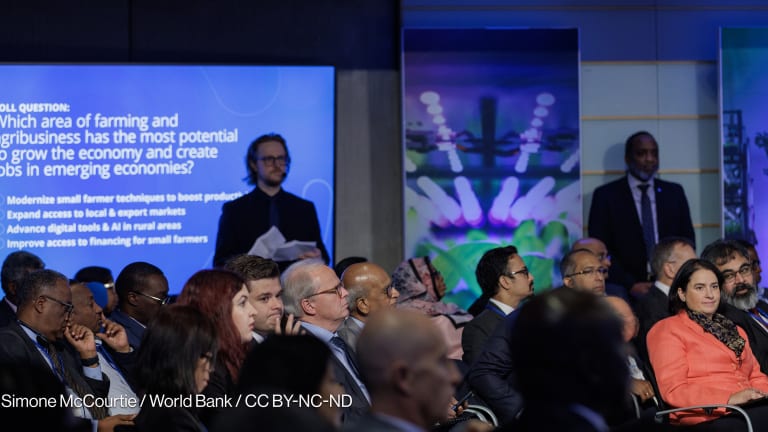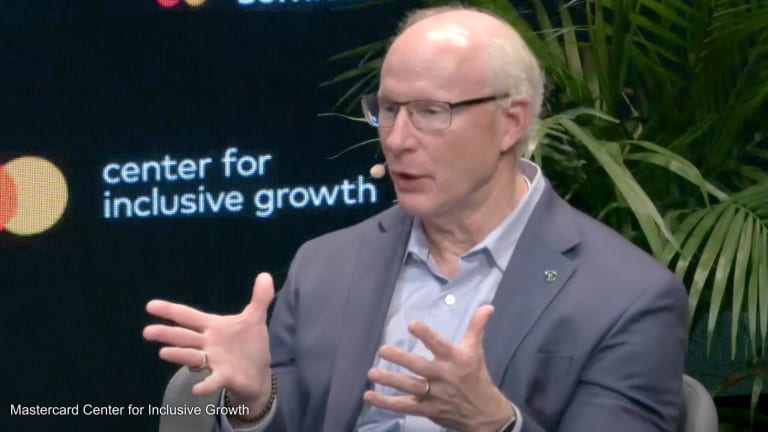
In the race to attract and retain the most productive and talented workers, important lessons may lie in the garment factories of Vietnam and mines in Africa. Who would have thought that providing an on-site kindergarten for worker’s children would reduce turnover rates by a third, generating an immediate financial return to Vietnamese garment factory Nalt Enterprise? Who would have thought maintenance costs would decrease when a global mining company put women in the driver’s seat of heavy trucks at Rio Tinto?
Women are 40 percent of the global workforce and form the bulk of the workers in many industries including agribusiness, tourism and textiles. And yet we have preconceived notions that too often get in the way of realizing the full gains of their participation. These include our ideas about what women can and can’t do, what really drives productivity and financial returns, and what happens when women are given opportunities to work in traditionally male-dominated sectors. Such beliefs are limiting companies’ profit opportunities and countries’ ability to grow.
Companies today have access to a large and growing female talent pool. More women than ever before hold a college degree and in many countries, they outnumber men in the graduating class. The question is: Will we shed our old biases and create workplaces conductive for women to deliver the best returns for businesses and themselves? And will we let go of outdated notions about gender roles for men as well?
Cultural and regulatory barriers to paid work remain a very real impediment for women. According to the World Bank’s new “Gender at Work” report, legal discrimination is an all-too-common barrier for women. Of 143 economies examined by the Women, Business & the Law Project, 128 had at least one law that differentiates between men and women. In addition, responsibilities at home still largely fall on the shoulders of women, regardless of income level. They spend on average twice as much time on household work and five times as much on childcare, according to Berneil and Sanchez-Paramo.
What’s at stake? The International Monetary Fund’s recent report “Women, Work and the Economy” highlights how dramatic the boost to a countries’ gross domestic product can be if women joined the workforce in similar rates to men. This is particularly true in emerging and developing nations. DeAnne Aguirre and her colleagues estimated that in Egypt alone, GDP could rise by more than a third if the floodgates to women are opened.
The IFC, a member of the World Bank Group, recognized that overcoming barriers to women’s employment was not possible without engaging the private sector, which accounts for nine out of every ten jobs in the developing world. IFC invests more than $25 billion each year exclusively in private sector companies operating in emerging markets.
Together with a handful of its clients in 2012, IFC launched WINvest, a global partnership on women’s employment. The aim of this initiative is to better understand the business case for expanding women’s employment and advancement opportunities within companies, and to share what was working and what was still getting in the way.
Some companies are already taking innovative steps to realize the business benefits of investing in women’s employment. Finlays Horticulture, the largest producer and exporter of fresh produce and flowers to the European Union from Africa, built a training program to develop its internal female talent pipeline. Rather than hire managers from outside the company as it had previously done, they were able to promote the most productive women from inside the company. This has saved the company $200,000 in costs associated with recruiting new workers, including advertising, training and lost productivity.
Mriya Agro Holding, a rapidly growing agribusiness company in Ukraine, calculated that replacing a skilled operations worker costs them more than twice the worker’s monthly salary. They point to the company’s family-friendly human resources policies as the reason they believe the turnover rate for women in the company is 75 percent lower than its overall average.
Managers at Odebrecht, a Brazilian global construction company, are seeing productivity improve as men are learning from watching women take a slightly different approach to doing the same job. And they see that women are motivated to achieve more by working alongside men.
If these anecdotal examples prove to be replicable and scalable, then the private sector can not only increase its returns to its shareholders by investing in women workers, but the rewards can be spread more broadly throughout communities to generate greater economic growth. IFC will continue to partner with companies globally and to scale these increased returns to businesses, families and communities.
Want to learn more? Check out She Builds and tweet us using #SheBuilds.
She Builds is a month-long conversation hosted by Devex in partnership with Chemonics, Creative Associates, JBS International as well as the Millennium Challenge Corp., United Nations Office for Project Services and U.K. Department for International Development.









